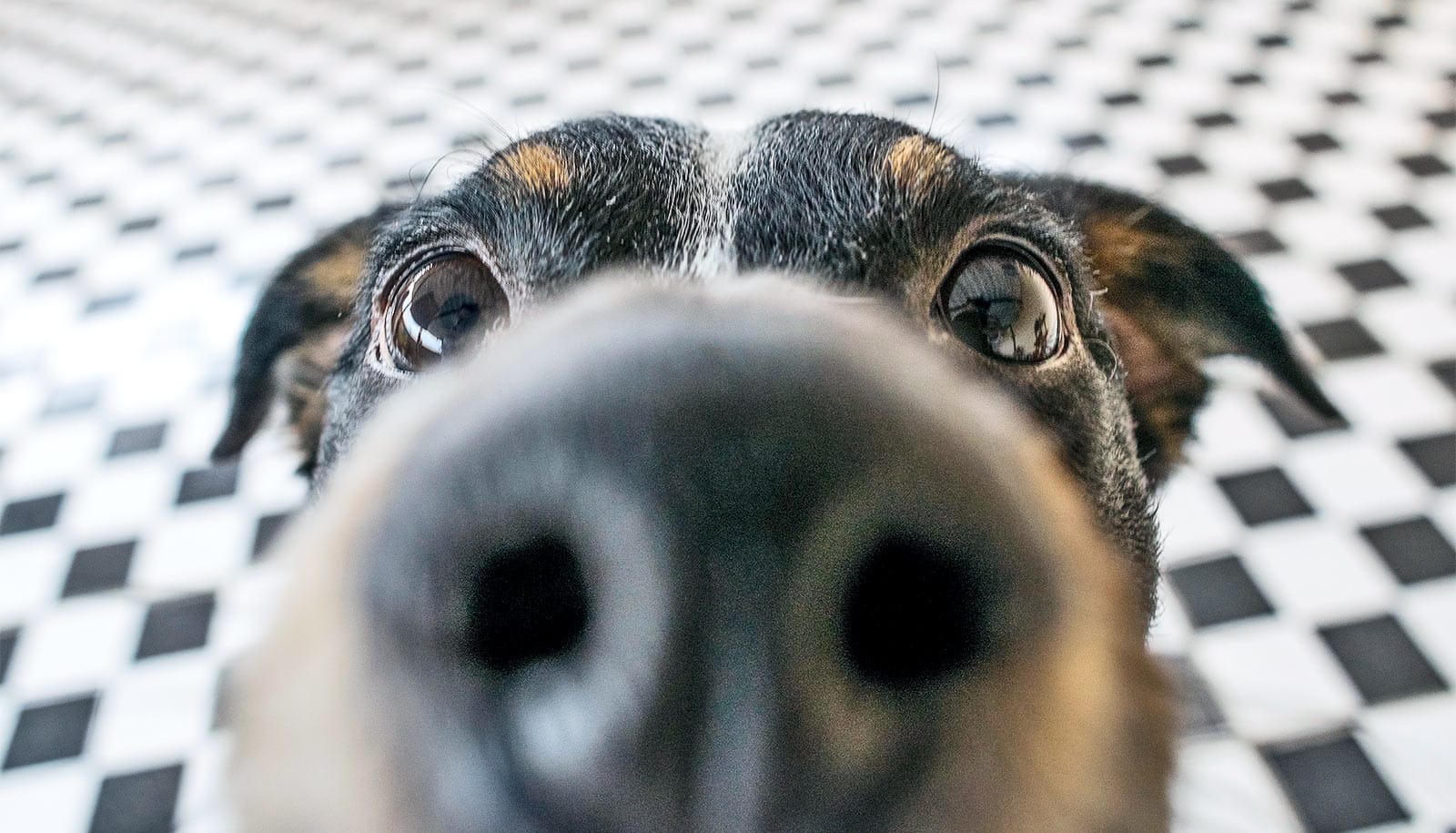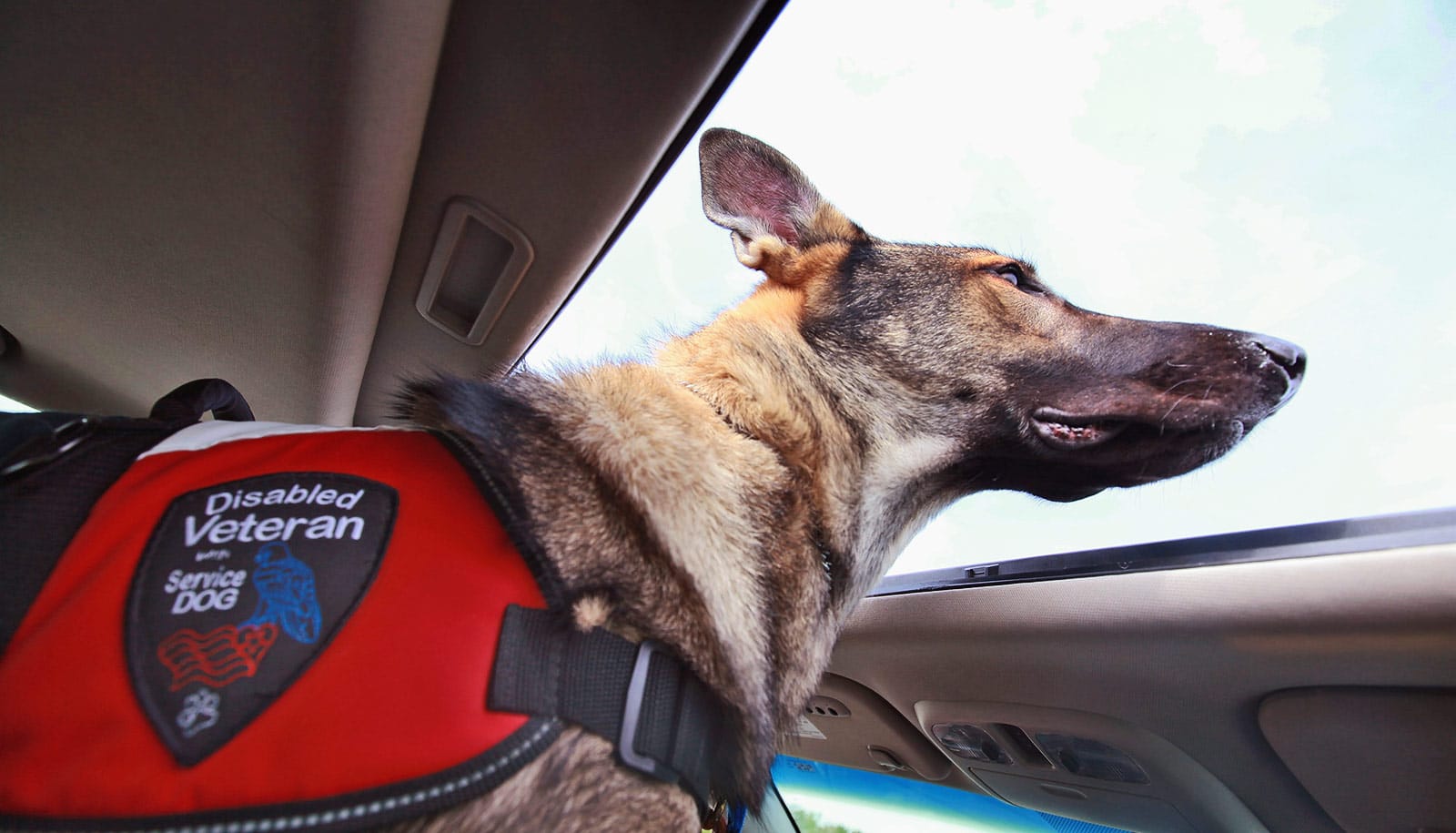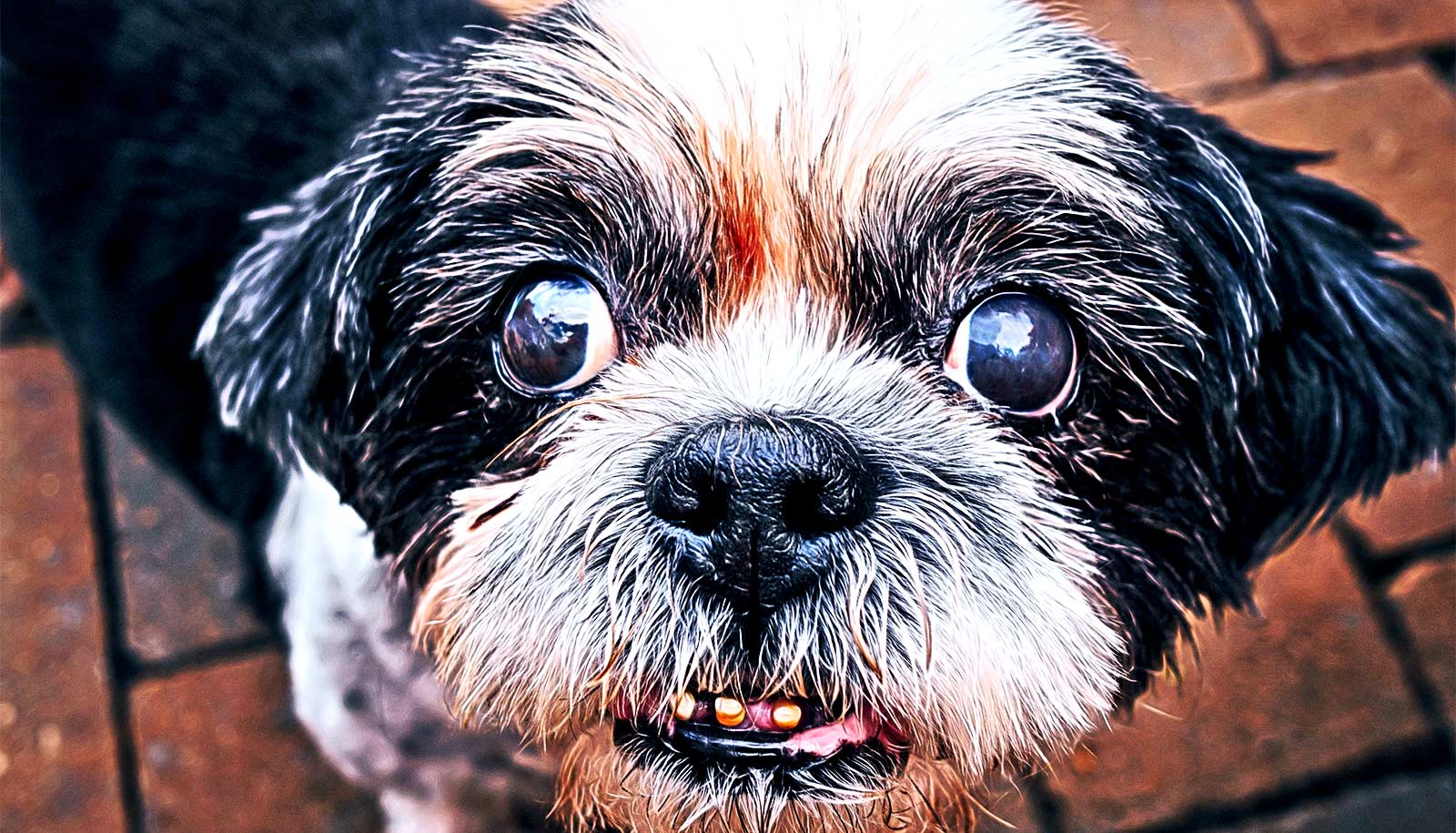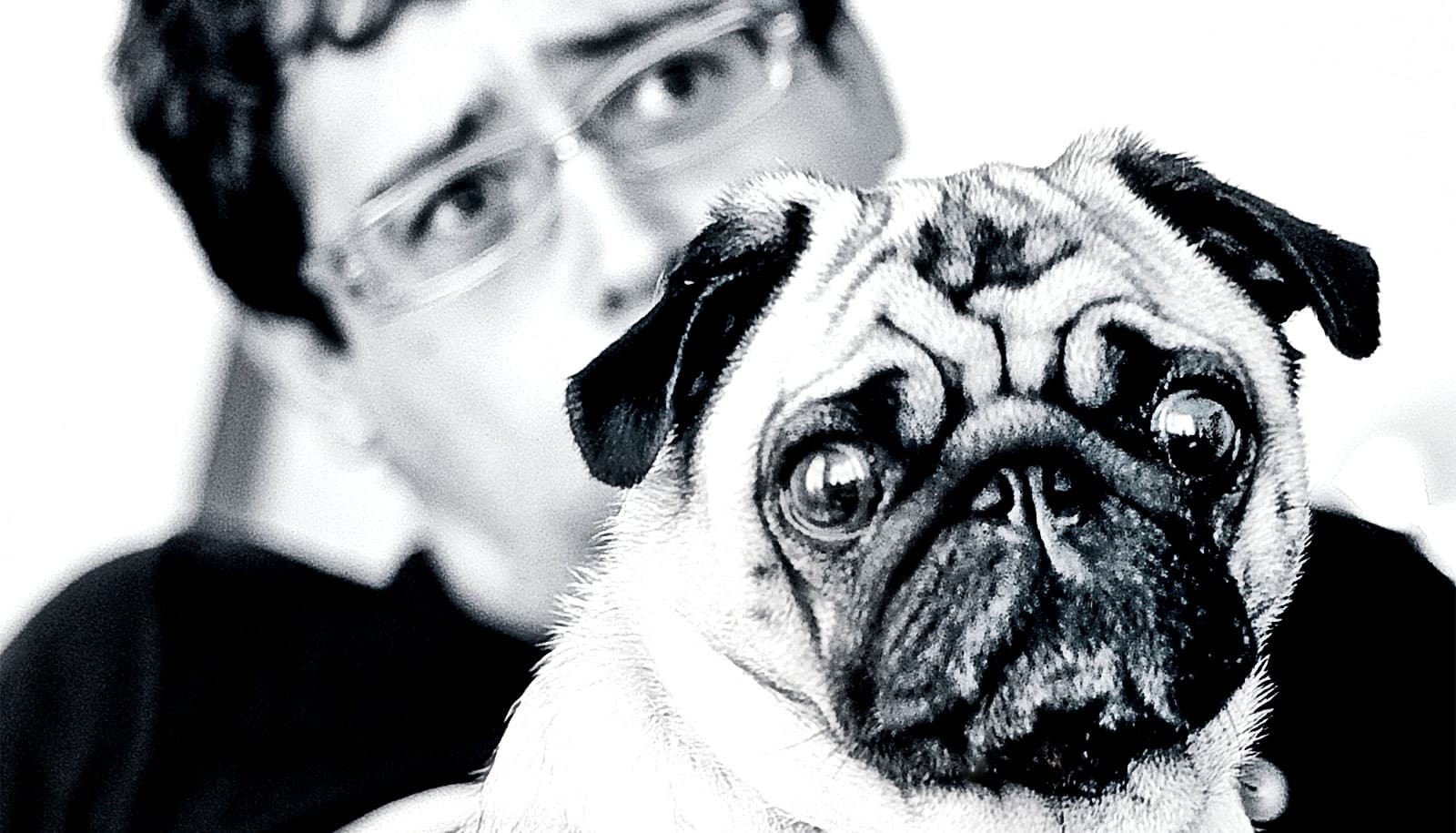New research adds to a small but growing consensus that trained medical scent dogs can effectively screen individuals who may be infected with the COVID-19 virus by smell.
The review paper in the Journal of Osteopathic Medicine follows a comprehensive survey of research devoted to the use of trained scent dogs for detecting COVID.
“The most striking result is that studies have already demonstrated that dogs can identify people who are COVID-19 positive,” says Tommy Dickey, a professor emeritus at the University of California, Santa Barbara.
“Not only that,” he adds, “they can do it non-intrusively, more rapidly, and with comparable or possibly better accuracy than our conventional detection tests.”
Dogs smelling for COVID-19
Not surprisingly, the magic lies in canine sense of smell, which gives dogs the ability to detect molecules in tiny concentrations—”one part in a quadrillion compared with one part in one billion for humans,” according to the paper.
Add to that other optimizations for smell, such as a large nasal area and the structure of their noses, which allows inflow through the nostrils and outflow through nasal folds.
Further, with 125-300 million olfactory cells and a third of their brains devoted to interpreting odors, dogs are well equipped with the ability to sniff out the volatile organic compounds that indicate the presence of COVID.
“The dogs are basically smelling the sweat of the person,” Dickey says of a series of experiments by French and Lebanese researchers testing canines’ capacity to sense COVID infection. Although the virus itself has no odor, metabolic products excreted by COVID-positive individuals through their sweat glands were detected by the 18 dogs selected for the study (16 Belgian malinois, one German shepherd and one Jack Russell terrier) with an accuracy rate of 83-100% after only four days of training. True failures, according to the study, could be attributed to “distractive external smells or movements by a TV filming crew.”
“One dog twice indicated positive results that could not be confirmed,” Dickey says. “Two weeks later they found that both people who gave those samples had to be hospitalized with COVID.”
Meanwhile, a German research group employed eight scent detection dogs in a randomized, double-blind controlled pilot study. The group trained the dogs for a week and then set them to sniffing 1,012 samples of saliva or tracheobronchial secretions. They returned an average detection rate of 94% with a sensitivity (ability to detect a true positive) of 67.9% to 95.2% and a specificity (ability to detect a true negative) of 92.4% to 98.9%. This pilot study used positive samples from severely affected individuals and negative samples from people with no symptoms. Future studies, according to that paper, could focus more on identifying different phases of infection or perhaps the detection of different disease phenotypes.
Using dogs to detect disease is not new. In fact, coauthor Heather Junqueira, a BioScent researcher, has previously published results showing that her scent dogs (beagles, basset hounds, and mixes of the two) can effectively detect non-small cell lung cancer.
“Canines are capable of detecting other types of cancer as well as malaria, Parkinson’s disease, and diabetes,” Junqueira says, adding that “medical scent dog research has really only gained traction in recent years and that it will take many more peer-reviewed papers before the idea of using dogs for disease detection hits the mainstream.”
Working dogs
Dickey’s own interest in the subject was sparked over the course of his work as a therapy dog handler of three Great Pyrenees (over 3,000 therapy dog visits), a longtime avocation he leaned on after cancer forced him to retire from UC Santa Barbara’s geography department. “I loved UCSB,” he says. “I loved teaching and I brought my therapy dogs to class all the time. I just had the life, what can I say?”
In fact, he couldn’t stay away—he and his dogs have been on hand to see the university community through hard times, offering their shaggy coats, wet noses, and calm demeanors through tragedy and stress. In retirement, Dickey has published three therapy dog books for children, some of which recount stories of their therapy dog adventures. In addition, he and his canines have presented educational demonstrations at the California Science Center and the Los Angeles Public Library, work that sparked his interest in the power of a dog’s sense of smell for medical detection.
So when the new disease called COVID-19 hit, Dickey was primed to ask: Can dogs detect the novel coronavirus? Naturally, there was little in the way of refereed research on the topic, so he teamed up with Junqueira, who was already conducting her own COVID detection research with her scent dogs in Florida.
“One of our big motivations was to write a peer-reviewed paper that basically gave a progress report,” he says. “Where are we? Is this stuff really possible?”
Dickey and Junqueira found that researchers used a variety of dogs. “There were a lot of Belgian malinois that were used, and dogs who have been trained on explosives and on colon cancer. So they were pro sniffers,” Junqueira says. “Other groups, such as the one behind a Colombian study, were motivated by the need to find a quick, accurate and cost-effective form of COVID early detection.”
The Colombian group utilized a variety of dogs—four Belgian malinois, one Alaskan malamute-Siberian mix, and an American pit bull terrier.
“The pit bull had been previously mistreated,” Dickey says, “but they rehabilitated him, and he was perfectly capable and doing a great job at sniffing.” After almost two months of training and thousands of samples later, this Colombian canine cohort performed with a remarkable 95.5% sensitivity and 99.6% specificity.
During the various blind, controlled experiments, the total time for detection was a matter of minutes or less. Such speed is a huge asset in real world scenarios. In particular, a UK-based research group has outlined their plans to train and ultimately deploy dogs at United Kingdom airports and ports of entry as part of the COVID-19 screening process.
With all the sniffing going on in the presence of an airborne disease, it’s natural to be concerned over whether dogs can catch and transmit COVID-19. It’s still the topic of ongoing research, but evidence points to a low likelihood of transmission, according to the paper, though precautionary measures should be taken to protect everyone involved.
“Current research supports the use of scent detection dogs for pilot COVID-19 screening studies involving humans in venues such as airports and sporting events,” Dickey says. “In addition, the JOM paper points out that another line of research can utilize medical scent detection dogs involving the development of medical electronic noses.”
In principle, you wouldn’t even need a dog to sniff out COVID if you could mimic the way it smells and processes scents, according to the researchers. Through sensors and artificial intelligence, they say, it might be possible to someday match a dog’s performance using wearable electronic noses, similar to wristband sensors for reporting heart beat rate and patterns, blood pressure, and oxygen, that could monitor a person’s sweat for metabolites and biomarkers that could indicate diseases such as COVID-19.
Source: UC Santa Barbara



